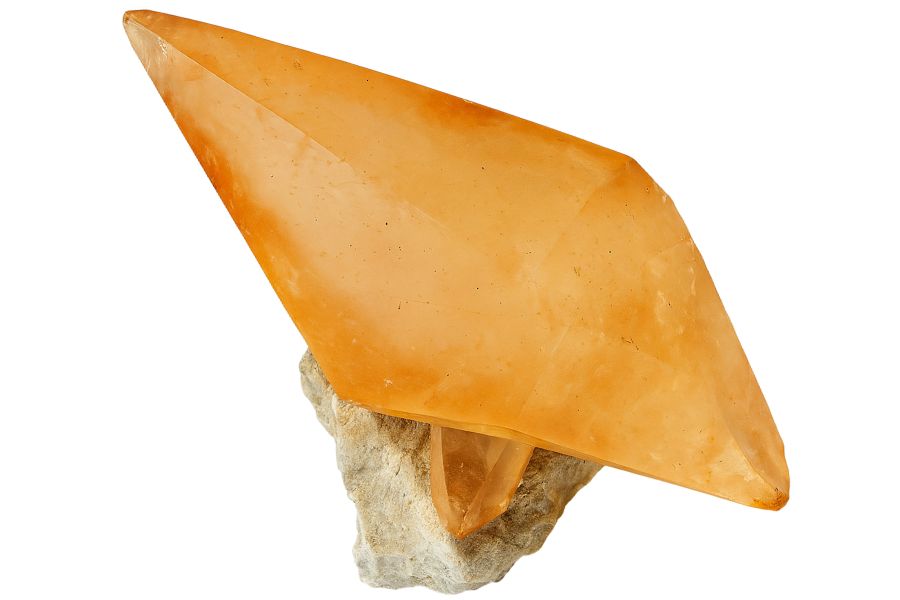Tennessee offers a fantastic opportunity for anyone interested in finding gemstones. From its eastern mountains to the western plains, the state’s diverse landscape holds many beautiful treasures.
Finding gemstones in Tennesse can be as simple as visiting riverbeds, gravel bars, and creeks. When you explore these areas, you will find many kinds of beautiful stones waiting to be discovered. Taking a little time to search these spots can lead to a rewarding discovery for you.
Knowing what to look for and where to search will help you go home with a great variety of gemstones. With our guide, you just might make an amazing discovery that you can take home.
- The extensive local experience and understanding of our team
- Input from several gem hunting groups and organizations
- The accessibility of the mining locations
- Safety and potential hazards when collecting
- Private and public locations
- A desire to include locations for both experienced gem hunters and those who are just starting out
Overall we’ve been able to put together a great list that anyone can use to locate a lot of beautiful gems.
The Gemstones Found In Tennessee You Can Mine
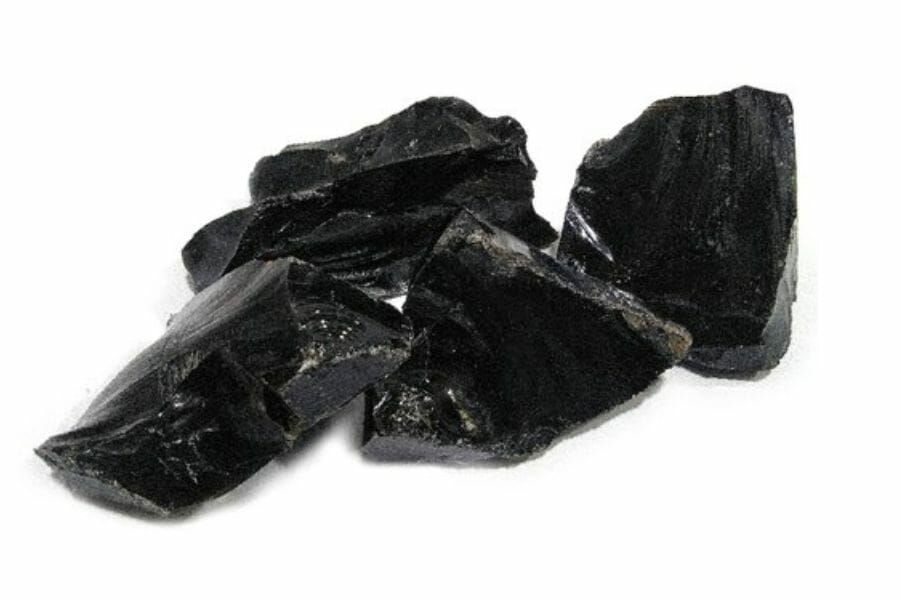
In Tennessee, there is an extremely wide variety of gems. Since every state is different and not everyone knows where to get this information, we’ve made many guides to help you locate gem mines near you. You can find rare and more common gems in this area with the appropriate information and good fortune.
Tennessee river pearl
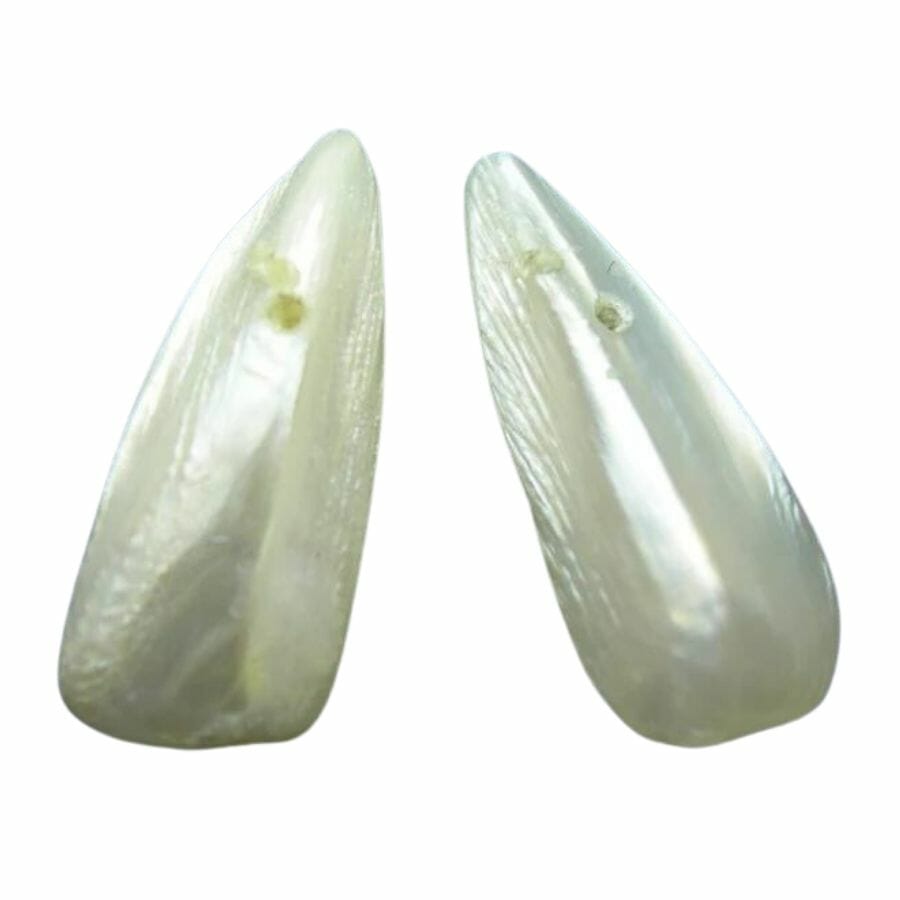
Picture a shimmering, lustrous gem with a soft glow, almost like a little moon caught in a droplet of water. That’s a Tennessee river pearl!
Here’s how it works: tiny particles, like a grain of sand, sometimes find their way inside a freshwater mussel. Now, imagine getting a tiny pebble in your shoe – super annoying, right? The mussel feels the same way!
So, to make itself comfortable, the mussel starts coating the intruding particle with layers of something called nacre. This nacre is smooth and shiny, and over time, as layer upon layer is added, we get a stunning pearl.
People value these pearls for their natural beauty and their long history in Tennessee. They tell a story of patience, growth, and the magical things that can happen in the quiet depths of a river.
Over the years, these pearls have been used in gorgeous jewelry, making them a shining example of Tennessee’s natural charm. Tennessee river pearls are a shiny example of nature’s creativity, and they’re a gem in the truest sense!
Where you can find river pearls in Tennessee
- Birdsong Resort (The Tennessee River Freshwater Pearl Farm)
Opal
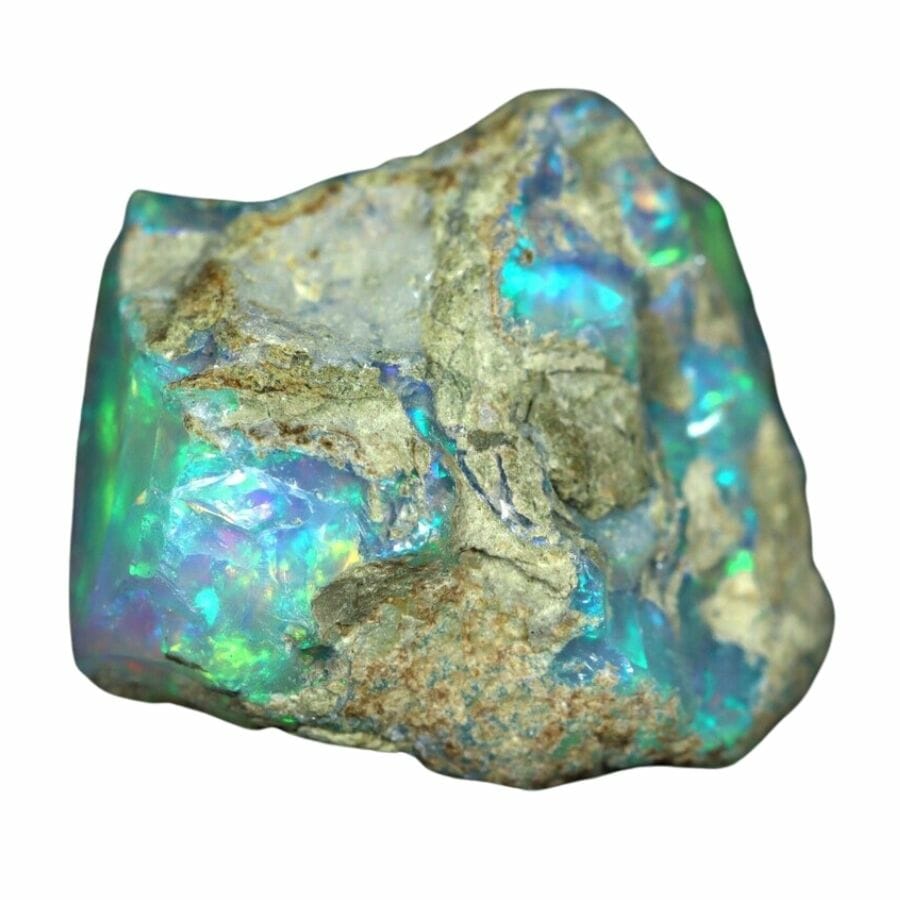
Opals look like they’ve captured a rainbow inside. With every move, they shimmer and flash with a play-of-color that’s like a dance of light. It’s no wonder many people are completely mesmerized by them.
They’re made from tiny spheres of silica. When water finds its way into cracks and crevices in the ground, it carries this silica with it. Over time, the water evaporates, and the silica gets left behind, forming these tiny spheres.
The spheres stack together, and the way they catch the light creates that magical play of colors we love in opals.
The play-of-color happens because of the way the silica particles are arranged. They bend and scatter light, creating a dance of colors that can change as the gem moves.
Among the valuable rocks in Tennessee, opals hold a special place in many hearts. Each opal is one-of-a-kind, just like a snowflake.
People have loved opals for thousands of years. In ancient times, people thought that opals brought good luck and even magical powers.
Where you can find opals in Tennessee
- Pilot Knob Prospect, Overton County
Amber
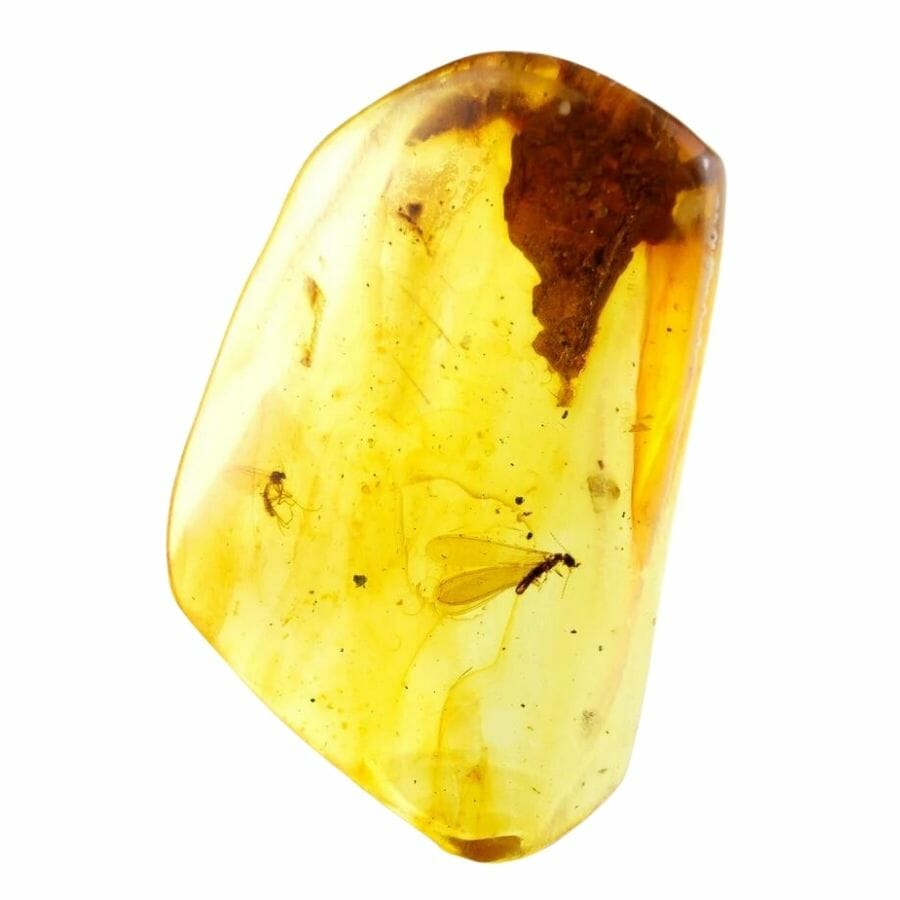
Amber is like a golden window into the past! This beautiful gem isn’t actually a rock or mineral. Amber is the fossilized resin, or sap, from ancient trees.
Imagine sticky tree sap that’s trapped all sorts of tiny objects like insects, leaves, and even water droplets. Over millions of years, this sap hardens and turns into the beautiful amber we know today.
Here’s how it happens: Trees produce resin as a protective measure, especially when they get injured. Sometimes, insects or tiny plants get stuck in this gooey resin. As years roll on, layers of soil cover the resin, and the magic begins.
With pressure from the layers above and the Earth’s natural heat, the resin slowly changes. The water inside it evaporates, and it becomes harder and harder until it turns into amber. It’s like a natural time capsule, preserving everything inside!
People have loved amber for thousands of years, not just because it looks pretty, but also because of the cool stuff trapped inside. It’s like holding a tiny piece of ancient history in your hand.
Plus, some believe amber has healing powers, bringing calm and positive energy. So, cheers to amber, the golden gem that’s a snapshot of time!
Where you can find amber in Tennessee
- Coffee Bluff, Hardin County
Garnet
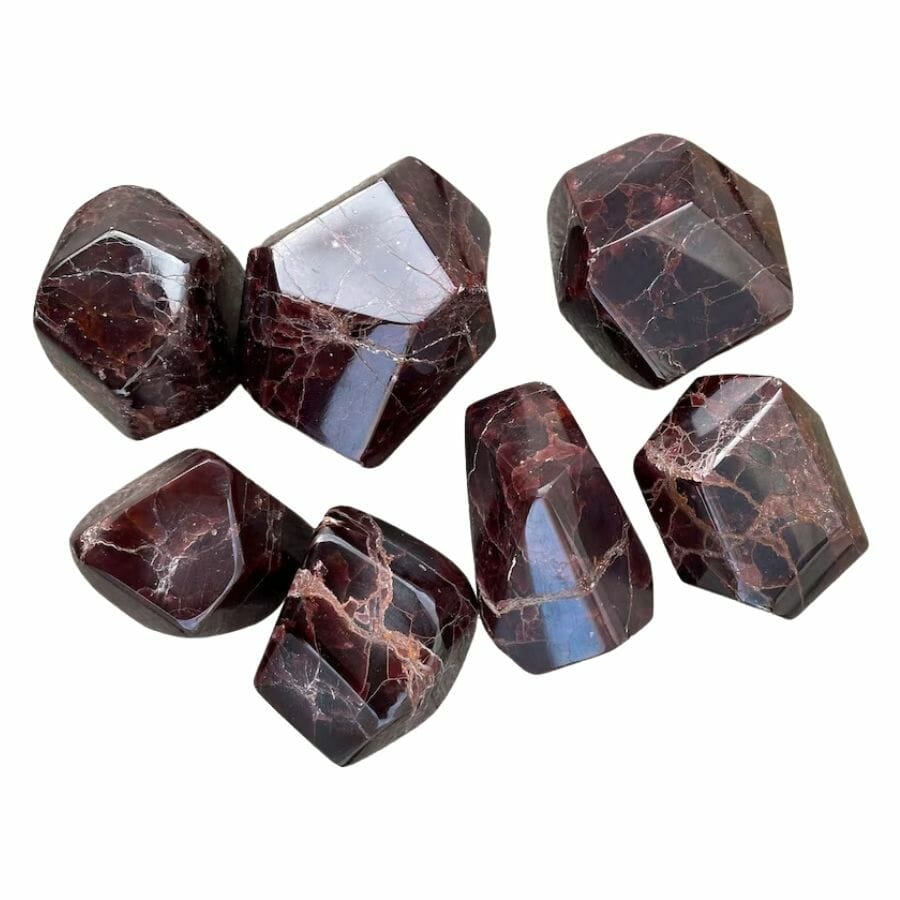
Garnet is an awesome gemstone that comes in many colors, although people often think of it as red. In Tennessee, garnet can be found in various places, and it’s a real treasure for rock lovers!
Now, let’s dive into the cool part – how garnets are formed. Picture this: deep inside the Earth where it’s super hot and packed tight, certain minerals get cozy under high pressure and heat.
Over time, these conditions cause the minerals to crystallize.
Once this happens, garnets start to form! They’re mostly found in metamorphic rocks, which are rocks that have transformed due to heat and pressure.
What makes garnet even cooler is the different types it comes in. The different types are due to the various minerals that combine.
So, you might find red garnets, green garnets, or even orange ones! Each one has its own personality, and rock lovers get really excited to see the differences.
The value of garnet can vary a lot based on its quality, color, and size. Just like with any other rock or gem, the clearer and more vibrant it is, the more valuable it might be.
Aside from its stunning beauty, garnet is also pretty tough. It doesn’t scratch easily, so it’s great for making jewelry. Because of this, people have been wearing garnet jewelry for thousands of years.
It’s also used in industry for things like sandpaper because of its hardness.
Garnet has history, beauty, and strength, all wrapped up in one sparkling gemstone. If you’re in Tennessee and stumble across a garnet, you’ll know you’ve found something that has been created deep inside the Earth, over millions of years.
Where you can find garnet in Tennessee
- Burra Burra Mine, Polk County
- Cherokee Mine, Copperhill
- Old Forge Magnetite Mine, Cranberry Magnetite Mining District
Unakite
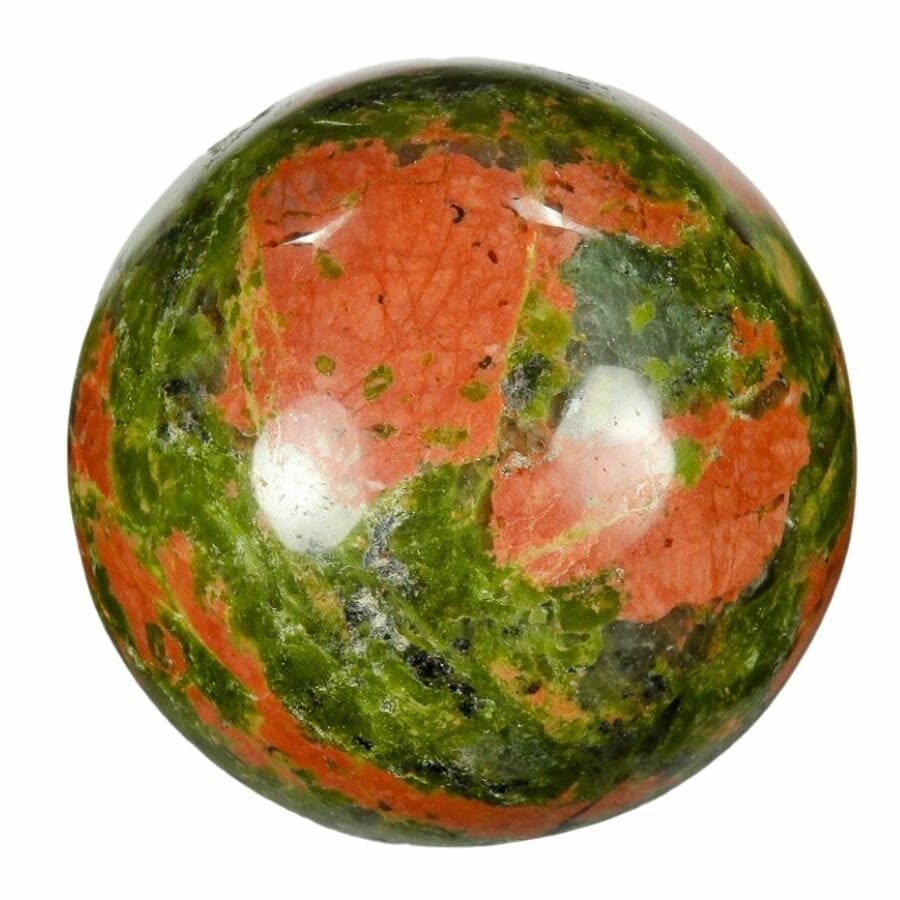
Unakite is a rock that’s made up of different minerals that give it a unique look. Imagine patches of pink, green, and sometimes even orange all swirled together.
It’s made up of three main parts: feldspar, which gives it that pretty pink color; epidote, which adds the green shades; and sometimes a dash of quartz, which can be clear or orangey.
The colors mingle together to create a rock that’s both beautiful and interesting to look at.
Unakite is a metamorphic rock, which means that it’s formed under a lot of heat and pressure inside the Earth. Imagine squeezing playdough in your hand really hard, and you’ll get an idea of how these rocks form.
The minerals get mashed together, and over time, with a lot of heat from the Earth, they turn into the cool-looking unakite.
People in Tennessee and all over really like unakite. Some use it for making jewelry like necklaces and bracelets.
Others like to keep a piece of unakite around just because it’s pretty to look at. And some even think it has special properties that help them feel more balanced and peaceful.
Where you can find unakite in Tennessee
- Unaka Mountains
- Roan Mountain
- Rag Mountain
Calcite
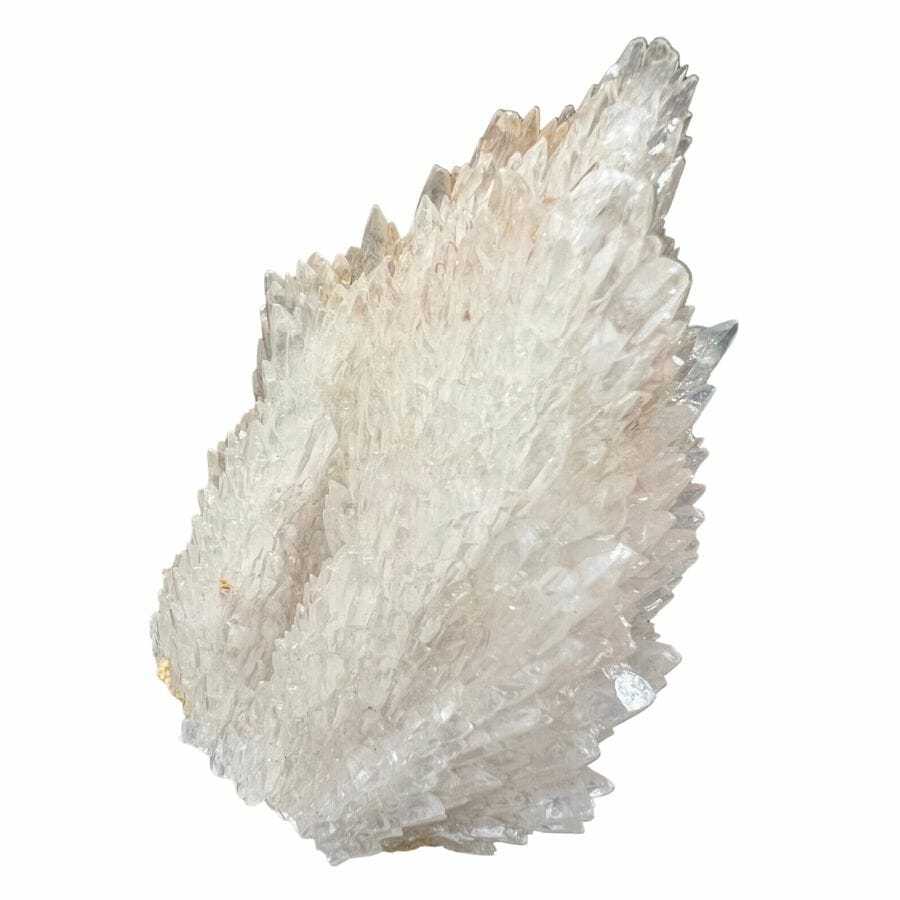
Calcite is one of those awesome minerals that you might stumble upon in the great state of Tennessee. It’s pretty common but no less exciting! Calcite comes in a whole range of colors, like white, yellow, red, and even blue.
It’s a mineral that’s mostly made up of calcium carbonate. That might sound like a mouthful, but it’s something you can find in things like seashells.
Calcite forms in different ways. It can come from the shells of tiny sea creatures that lived millions of years ago, or it might form from hot, mineral-rich waters that move through the cracks in rocks.
Over time, these minerals build up and create beautiful calcite crystals.
Because calcite is a carbonate, if you put a drop of acid on it, it’s going to fizz. This helps identify it among other rocks and minerals.
Calcite has a sparkling appearance and the way it can split light into beautiful rainbows make it a favorite for collectors.
It has a property where it can split light into two rays, making objects behind it look double. This is called “double refraction.”
But it’s not just pretty to look at. Calcite is used in all sorts of everyday things like toothpaste and even cement for buildings. It’s also used in making steel. Because of this, calcite is one of the most valuable rocks in Tennessee.
Where you can find calcite in Tennessee
- Elmwood Mine, Carthage
- Kingsport, Sullivan County
- Buck Miller Mine, Monroe County
Pyrite
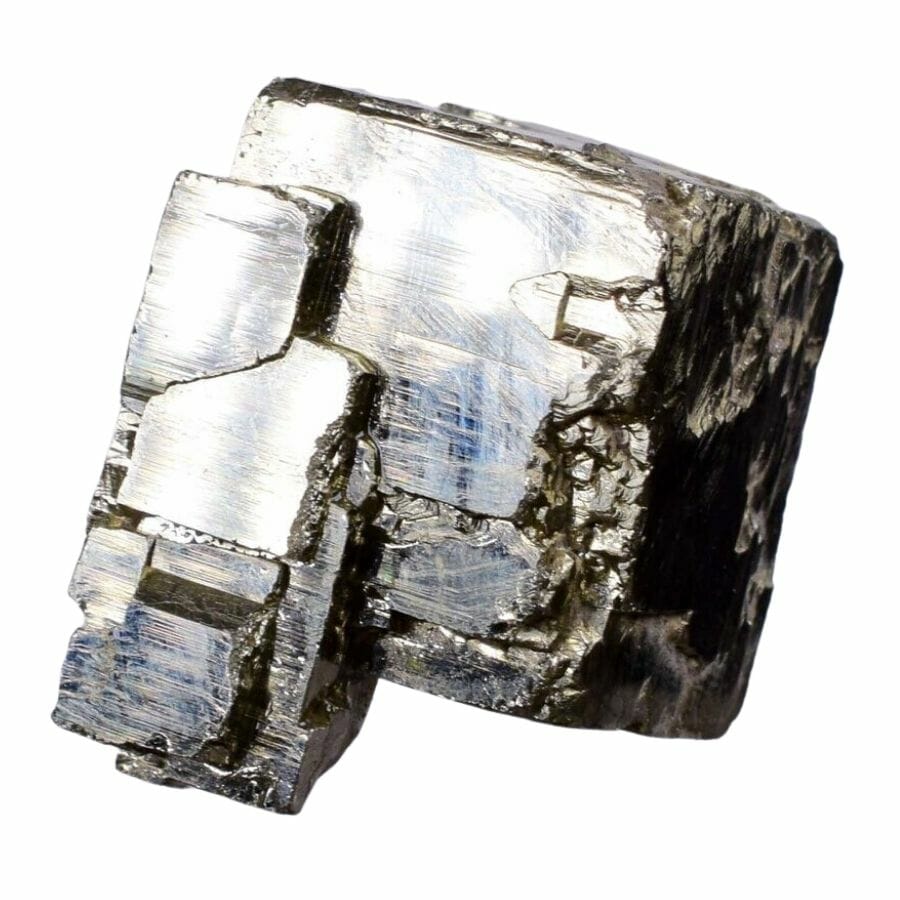
Pyrite’s got a nickname that you might have already heard: “Fool’s Gold.” It’s got that shiny, gold-like sparkle that can make people think they’ve hit the jackpot. But don’t be fooled; though it’s not real gold, pyrite is a treasure in its own right.
This mineral is a combination of iron and sulfur, and it forms in a variety of ways. Sometimes it grows around organic material in layers of clay or shale, and other times it forms in the cracks of rocks where hot fluids move through.
These fluids carry minerals that build up and crystallize into pyrite. The result is stunning, metallic crystals that can be shaped like cubes or other cool forms.
Aside from its dazzling appearance, pyrite has been used in all sorts of ways. In the old days, pyrite was struck against flint to create sparks for starting fires. It’s also been used in making batteries, and, believe it or not, even some types of paper!
But for many, the real joy of pyrite is in its natural beauty. Collectors and rock lovers prize pyrite’s unique, shiny appearance, and its surprising shapes.
Where you can find pyrite in Tennessee
- Edwin Patrick Farm Prospect, Hardeman County
- Shiloh Prospect (Ledford Prospect), Copper Ridge Mining District
- Wilder Hollow Prospect, DeKalb County
Quartz
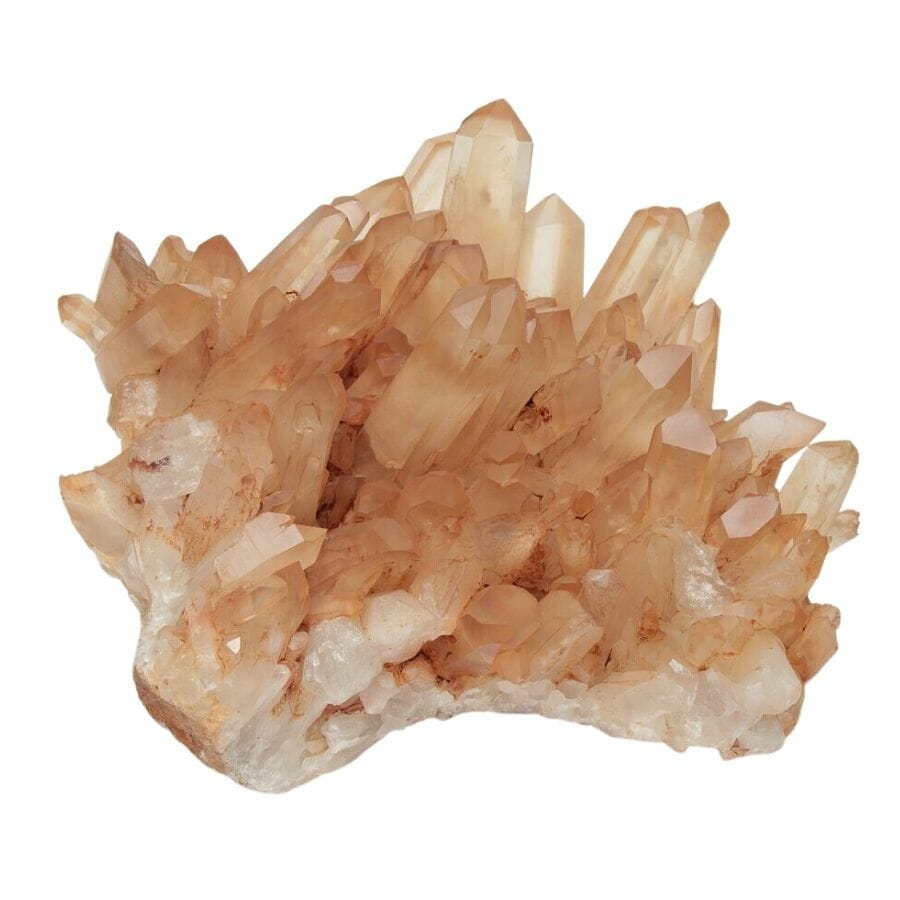
Quartz is one of those rocks that’s as amazing as it is common. You can find it all over the place, including in the beautiful state of Tennessee.
Quartz is made up of silicon and oxygen. When these two get together in the right way, they form crystals that are clear as glass.
But that’s not the only way you’ll find quartz. Sometimes, other minerals join in and give quartz different colors like purple, yellow, or even pink. That’s how you get varieties like amethyst or citrine!
The formation of quartz can happen in a bunch of ways. Sometimes, it forms when hot, watery fluids flow through rocks and leave behind minerals that turn into quartz crystals.
Other times, it grows slowly as other rocks melt away around it. The cool thing is that these different ways of forming give quartz all sorts of shapes and sizes.
This mineral is gorgeous to look at. People make jewelry out of it, and collectors love to have pieces of quartz on their shelves.
But it’s not just pretty; it’s also super useful. Quartz is used in electronics like watches and computers because it can help keep time really accurately.
Where you can find quartz in Tennessee
- Hambright Mine (Lord Mine), Red Hills Mining District
- H. N. Johns Prospect, Copper Ridge Mining District
- J. T. Burns Prospect, Laconia
Chalcedony
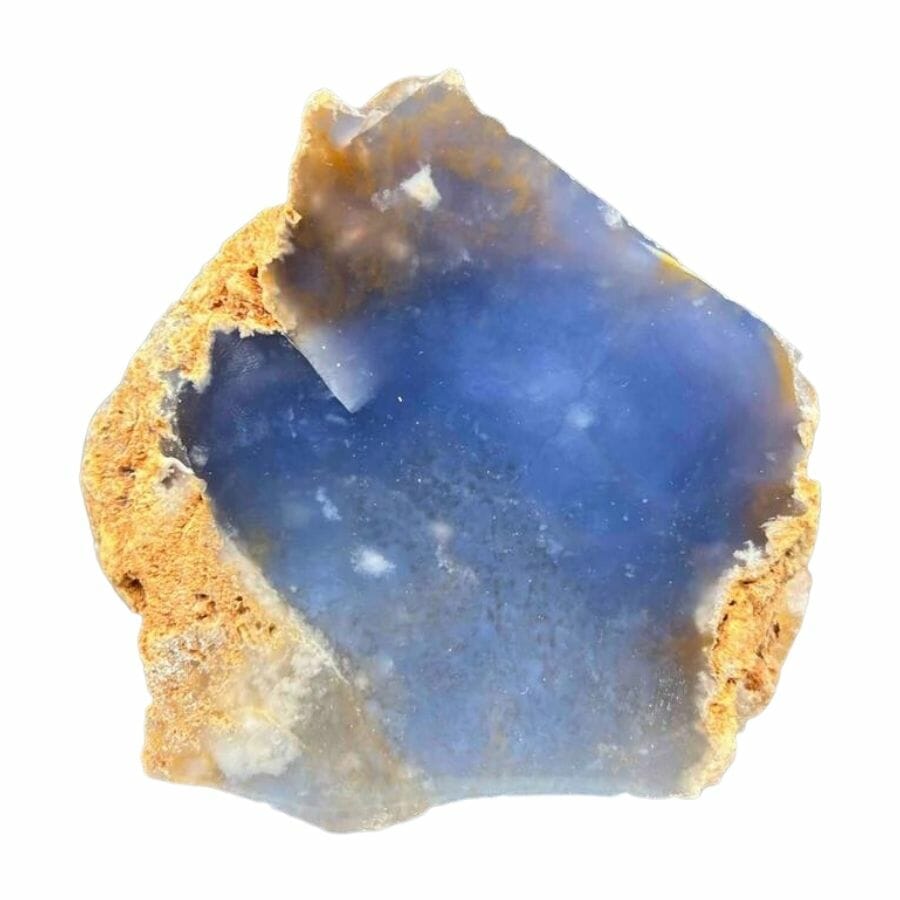
Chalcedony might not be as flashy as some other gems, but it has a soft, waxy luster. It can also be found in a rainbow of colors, from blues and greens to reds and yellows.
It’s made up of teeny, tiny crystals of quartz, all packed together so tightly that you can’t see them with just your eyes.
This mineral often forms in cracks and cavities of rocks, where mineral-rich water drips in and leaves behind these tiny quartz crystals.
Over time, they build up and create chalcedony.
People absolutely cherish chalcedony, and it’s not just because it’s pretty. For centuries, folks have carved it into gems for jewelry, tools, and even artwork.
Because of its variety of colors and patterns, every piece of chalcedony jewelry feels unique and special.
Chalcedony is one of those minerals that are as interesting as they are pretty. It’s a testament to how Tennessee’s underground world is full of wonders, just waiting to be appreciated and admired.
Where you can find chalcedony in Tennessee
- Pilot Knob Prospect, Overton County
- Silvertooth Agate Fields, Horse Mountain
- Sparta limestone quarry, White County
Jasper
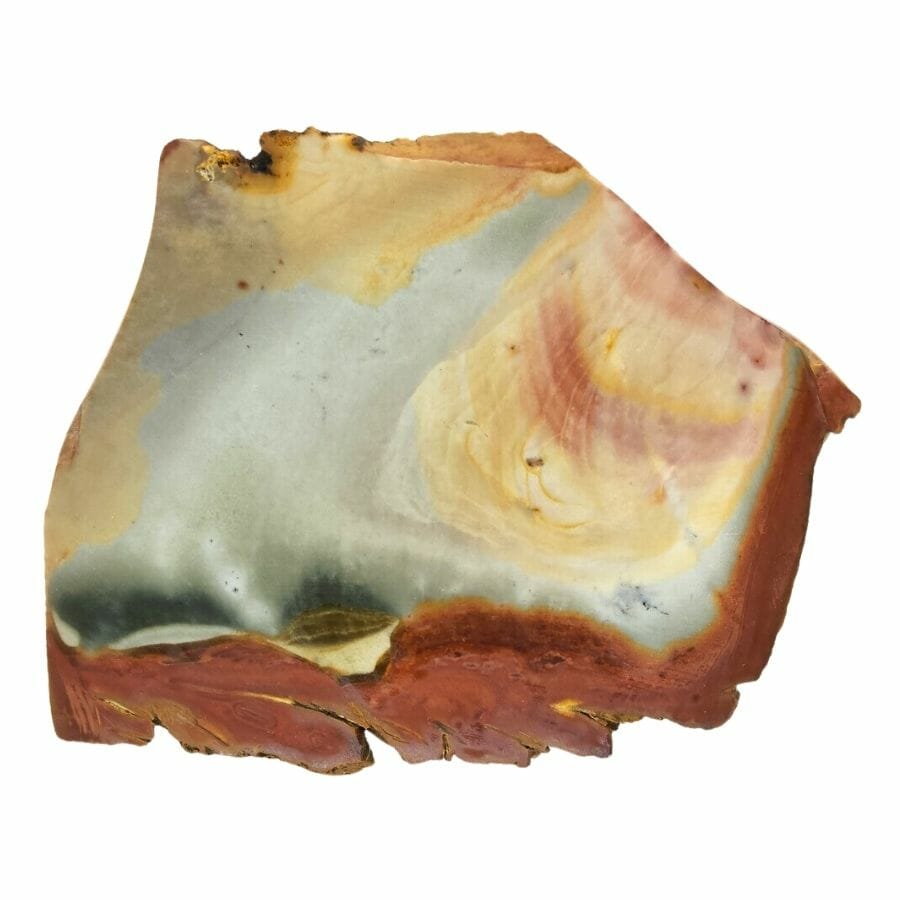
Jasper is one of the most colorful gemstones found in Tennessee! It’s a type of chalcedony, but what makes it extra special are the colors and patterns it comes in. Reds, yellows, browns, greens – jasper’s got a whole rainbow to show off.
This gemstone starts with tiny bits of minerals like quartz. These get mixed with other materials like clay and iron. Then, over time, these mixtures get buried, and nature goes to work.
With heat and pressure, all those bits stick together and harden into jasper. It’s kind of like how a beautiful painting is made, one brush stroke at a time.
Jasper’s colors and patterns make each piece unique, and people have loved using it in jewelry and decorations for thousands of years. But it’s not just pretty; jasper’s also tough and can be carved into shapes and designs.
And here’s a fun fact: Some people even think jasper has healing properties. They say it brings calmness and strength. Whether that’s true or not, one thing’s for sure: jasper is a real gem!
Where you can find jasper in Tennessee
- Bumpass Cove Mining District
- Immel Zinc Mine, Mascot-Jefferson City Zinc Mining District
- Sugar Hollow and No. 10 Iron Mine, Washington County
Selenite
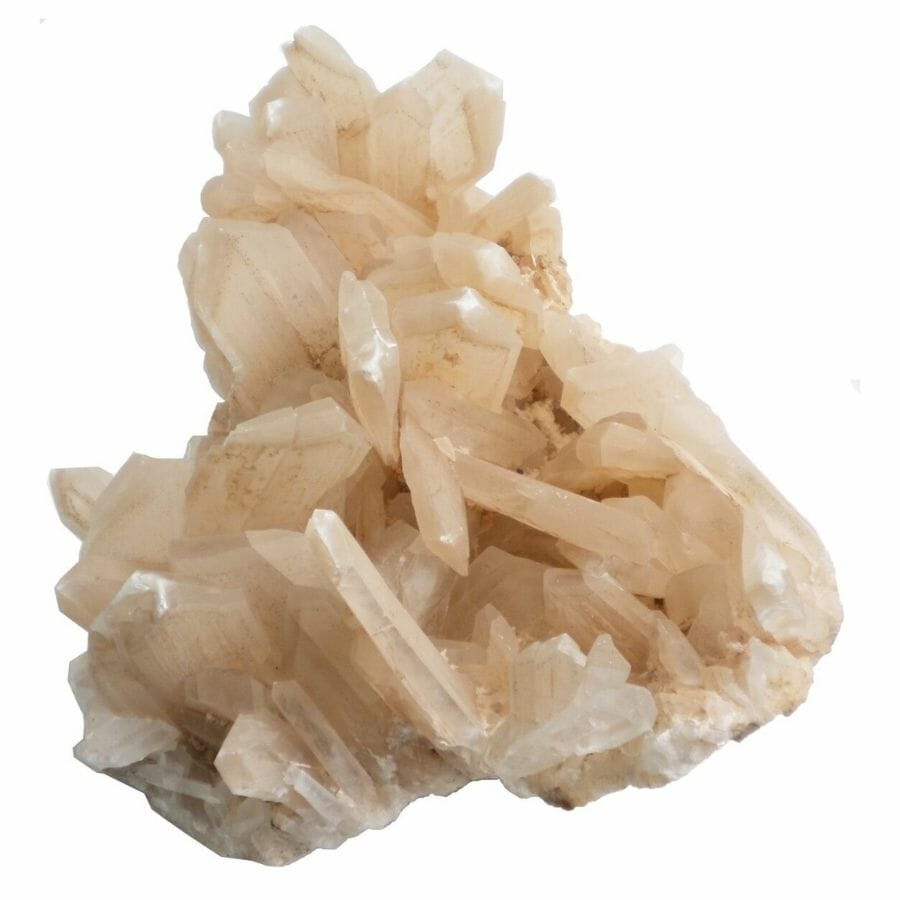
Let’s shine a spotlight on selenite, a mineral that looks like it’s straight from a fairy tale! Selenite is a form of gypsum, and it has a soft, glowing appearance that makes it look like moonlight trapped in a rock.
Imagine this: water filled with minerals is moving through the ground. As this water evaporates, the minerals get left behind and start to bond together. Slowly but surely, these minerals begin to create crystals.
If the conditions are just right, those crystals grow into the beautiful, shiny selenite we know and love.
Selenite’s appearance is simply mesmerizing. Its long, clear crystals can look like shimmering wands or delicate angel wings. It’s no wonder that people are drawn to it like moths to a flame!
Many folks love to use selenite in their homes for decoration, or even in their gardens. It adds a touch of natural wonder wherever it goes.
But there’s more! Selenite is also popular in the world of healing. Some people believe it can bring calmness and clarity to a busy mind.
Whether you’re admiring its glow or enjoying its soothing vibes, selenite has a special way of speaking to the heart.
Where you can find selenite in Tennessee
- Marion County quarries
Agate
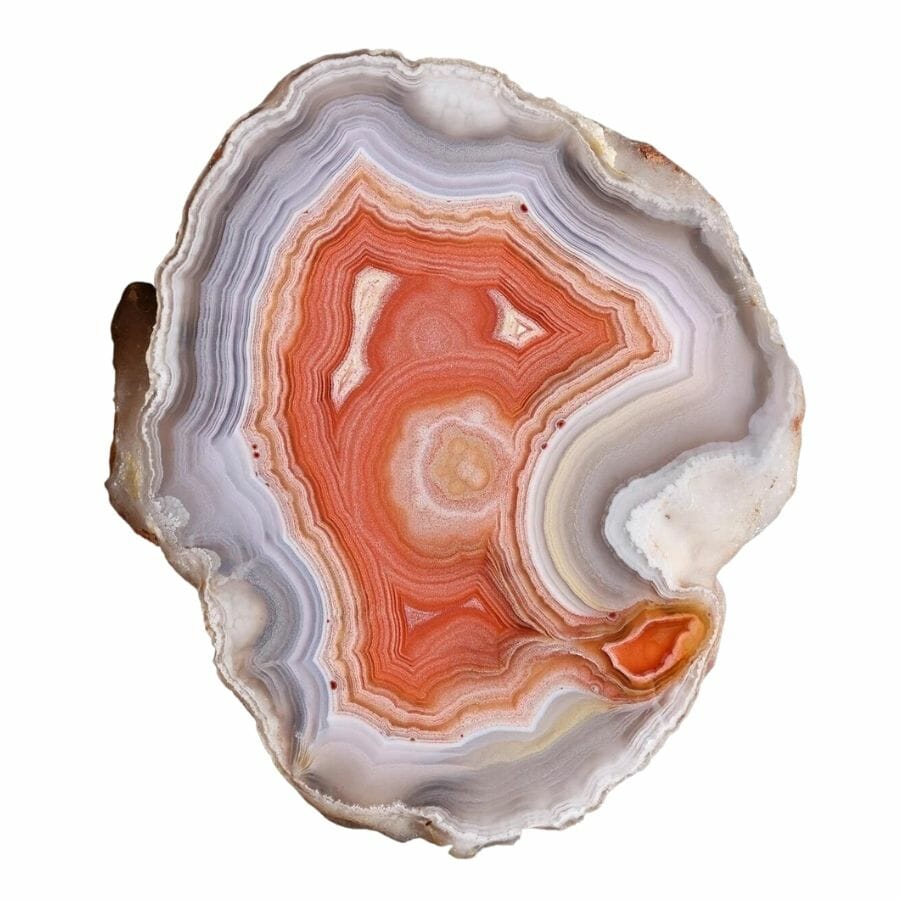
When it comes to the types of rocks found in Tennessee, agate is one of the standout stars! It’s a special kind of quartz, but what makes it unique is its stunning layers of colors.
Picture a slice of agate, and you’ll see rings of colors, kind of like the rings in a tree trunk.
Long, long ago, when cracks and hollows formed in rocks, they filled with watery goo packed with tiny minerals. As the goo began to harden, the minerals inside started to settle in layers, like how you see rings inside a tree trunk.
Over time, these layers built up to create the dazzling patterns we see in agate.
Its beautiful bands and patterns make agate a top pick for jewelry and decorations. This gemstone isn’t just pretty to look at; some folks believe it can bring balance and calm to their lives, making it a hit with those who love its vibes as much as its looks.
So, when you’re thinking of rocks and minerals found in Tennessee, remember agate and its beautiful bands. Every slice is a masterpiece, showing off the incredible artistry of Mother Nature.
Where you can find agate in Tennessee
- Silvertooth Agate Fields, Horse Mountain
- Oak Ridge Occurrence, Anderson County
- Sparta limestone quarry, White County
Celestite
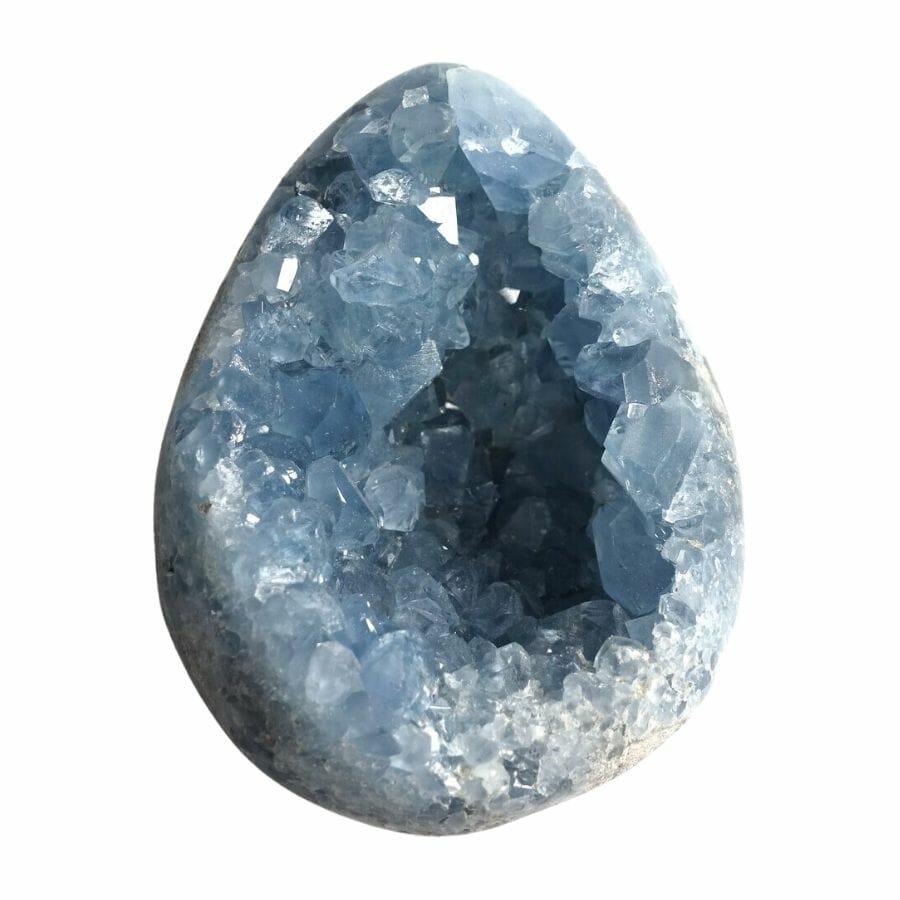
If you’ve ever seen a piece of celestite, you know it’s like holding a tiny piece of the sky. This mineral has this dreamy blue color that can remind you of a clear summer’s day in Tennessee.
Now, let’s dive into how celestite is formed. Picture water deep underground, filled with minerals. As the water moves through rocks, it leaves behind certain minerals that begin to join together.
Over time, they form crystals. These crystals then grow bigger and bigger, giving us the sparkling celestite we see.
Celestite’s soft blue glow is a real eye-catcher. It’s perfect for jewelry and decorations, adding a touch of Tennessee’s natural beauty to your home.
But celestite’s charm goes beyond its looks. Some people believe that celestite has calming properties, and they use it to create peaceful spaces.
In the grand landscape of Tennessee’s mineral wonders, celestite shines brightly. It’s a testament to the amazing things that happen deep down in the Earth. Every chunk of celestite is a tale of time, water, and Earth’s geological processes.
Where you can find celestite in Tennessee
- Van Buren County Highway Department quarry (Pit No. 394), Spencer
- Nashville Quarry, Davidson County
- Buffalo Cove Quarr, Buffalo Cove
Carnelian
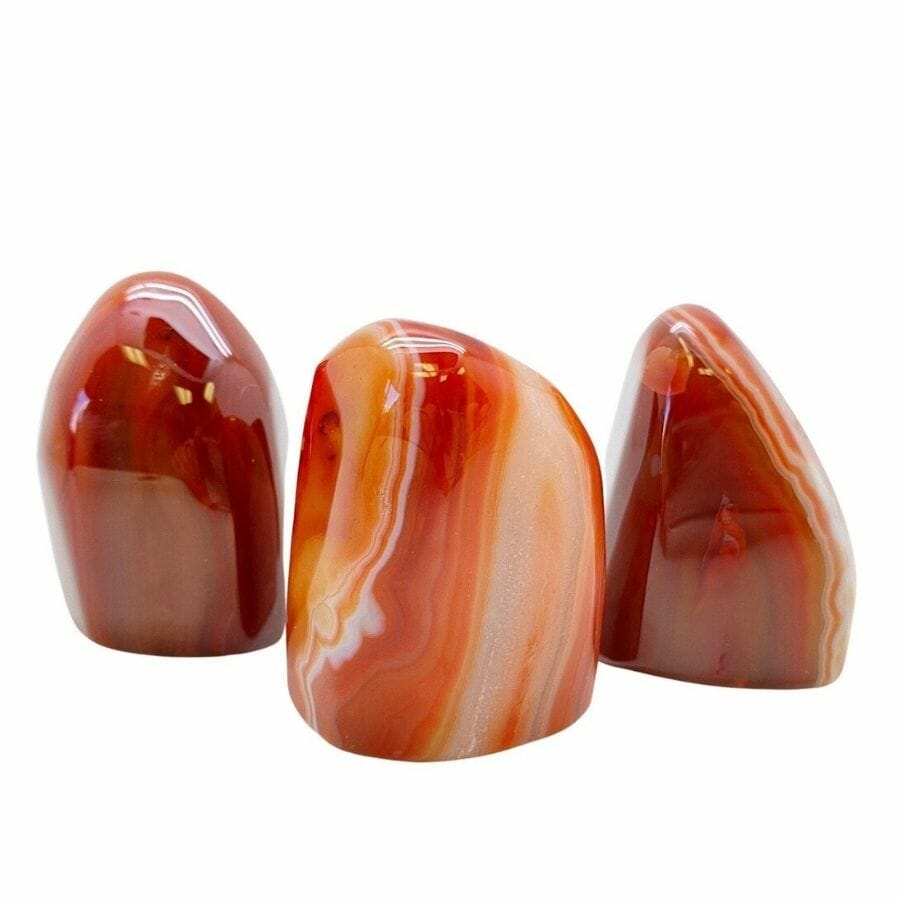
Carnelian is a type of chalcedony. But instead of the soft colors we often see in chalcedony, carnelian is all about bold reds and oranges. It’s like a little ember you can hold in your hand!
Imagine groundwater moving through rocks, carrying with it tiny particles of iron. As the water seeps into cracks and spaces in rocks, it leaves behind the silica, which starts to stick together.
Over time, iron gets added to the mix, and it’s this iron that gives carnelian its fiery colors. Slowly but surely, the stone hardens and forms carnelian.
Among the gemstones found in Tennessee, carnelian truly stands out. Its warm colors are super eye-catching, making it a hot pick for jewelry.
It’s also been loved for centuries by civilizations all over the world. Today, in Tennessee and beyond, many treasure it for its beauty and for the energy it’s believed to bring.
Some also say that wearing carnelian can boost your confidence and creativity!
Where you can find carnelian in Tennessee
- Tullahoma, Coffee County
- Silvertooth Agate Fields, Horse Mountain
Azurite
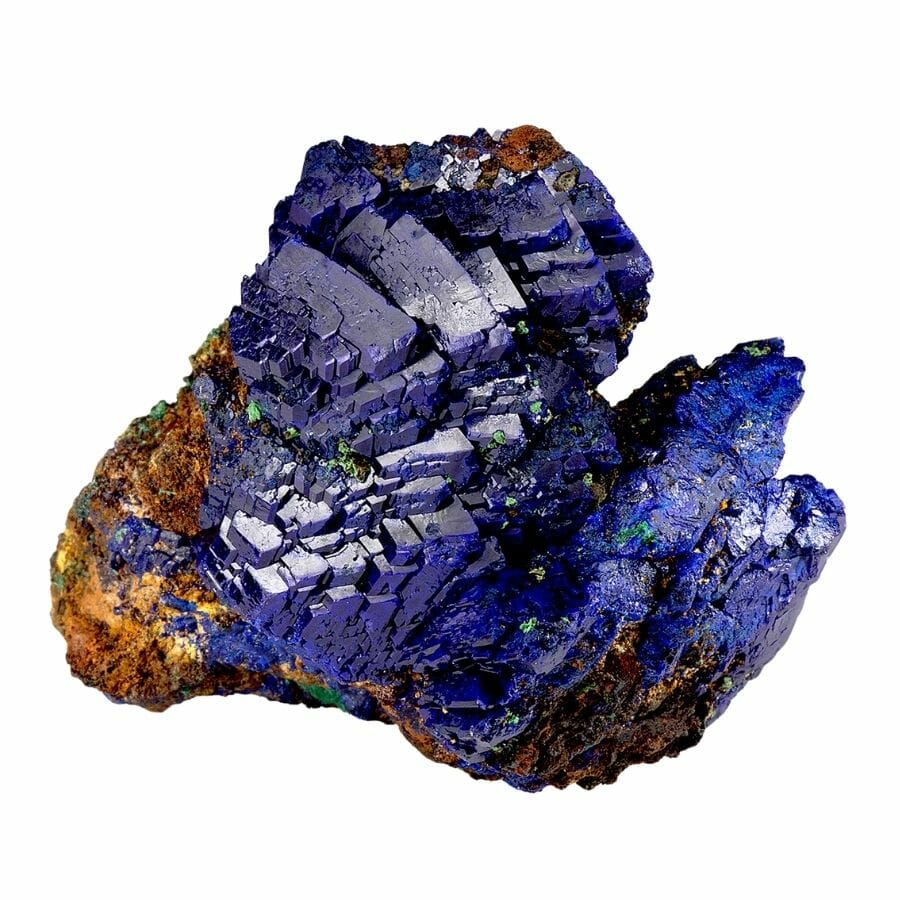
If the sky had a twin in the rock world, it would be azurite. This gem boasts a deep, dreamy blue that can make you think of a vast ocean or a midnight sky.
Let’s unravel the mystery of how azurite comes to be. Picture copper minerals in the ground, just hanging out. When water carrying oxygen and carbon dioxide passes by these minerals, it reacts with them.
This reaction, over time, results in the creation of azurite. With the right conditions, nature can turn basic minerals into something as stunning as azurite!
Azurite’s rich blue hue is a showstopper. Throughout history, people have crushed azurite to use its vibrant color in paints and dyes.
Besides being a natural pigment, azurite is also a hit among jewelry and gem collectors. Its mesmerizing color makes any piece stand out.
Plus, some folks believe azurite helps enhance intuition and awareness.
In the grand rock collection of Tennessee, azurite shines like a sapphire star. It’s a blend of Earth’s chemistry and artistry.
Where you can find azurite in Tennessee
- Ducktown Mining District, Polk County
- Baker Hill, Livesay Mills
Fluorite
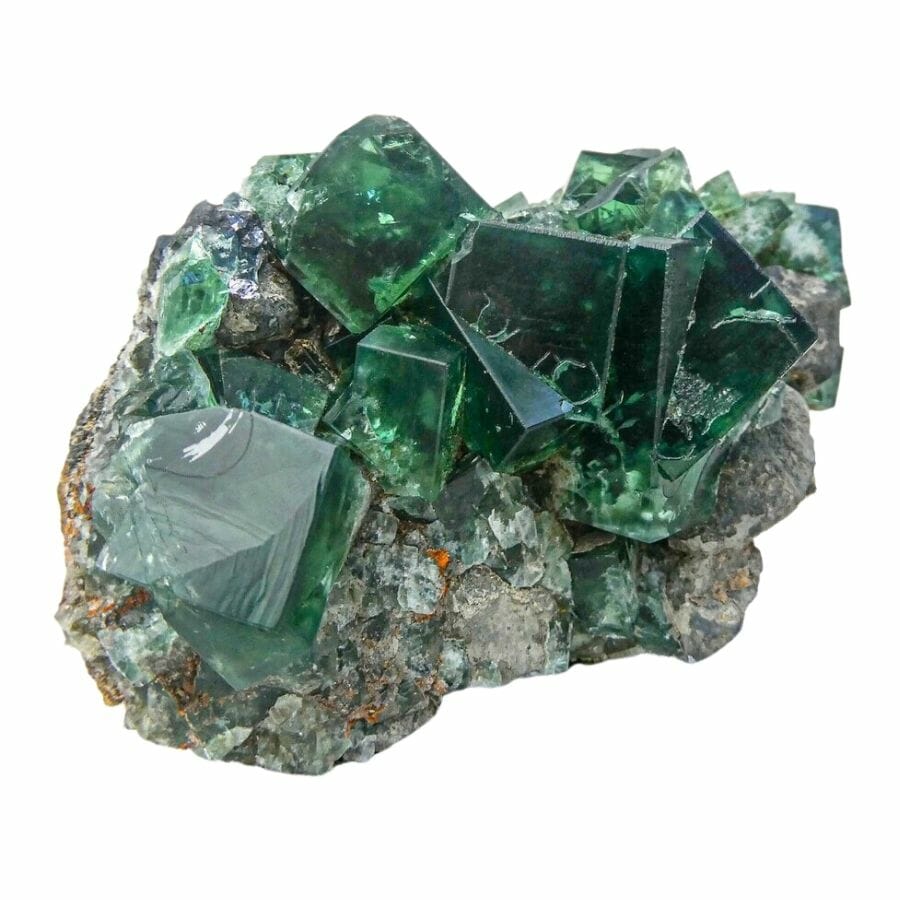
Imagine a mineral that can be clear as glass or as vibrant as the rainbow. That’s fluorite! It comes in so many shades – purple, green, blue, and even yellow. Sometimes, all these colors can be in one single piece.
Deep down in the Earth, there are hot liquids full of different minerals. Sometimes, these hot liquids get into cracks in the rocks, and when they cool down, they leave behind some really cool crystals.
If the conditions are just right, fluorite can form, creating those beautiful colors.
Fluorite is prized for its colors. It’s like having a piece of the sky, grass, and sunshine all in one stone! People love to use it for jewelry and decoration because it’s so pretty. Fluorite also glows under ultraviolet light!
Beyond its beauty, fluorite is also super useful. It’s been mined to help make things like steel and even the fluoride in our toothpaste.
Where you can find fluorite in Tennessee
- Rockway Quarry (Limestone Products Corp.), Colonial Heights
- No. 4 Shaft, Elmwood Mine, Carthage
- Gordonsville Mine, Carthage
Marcasite
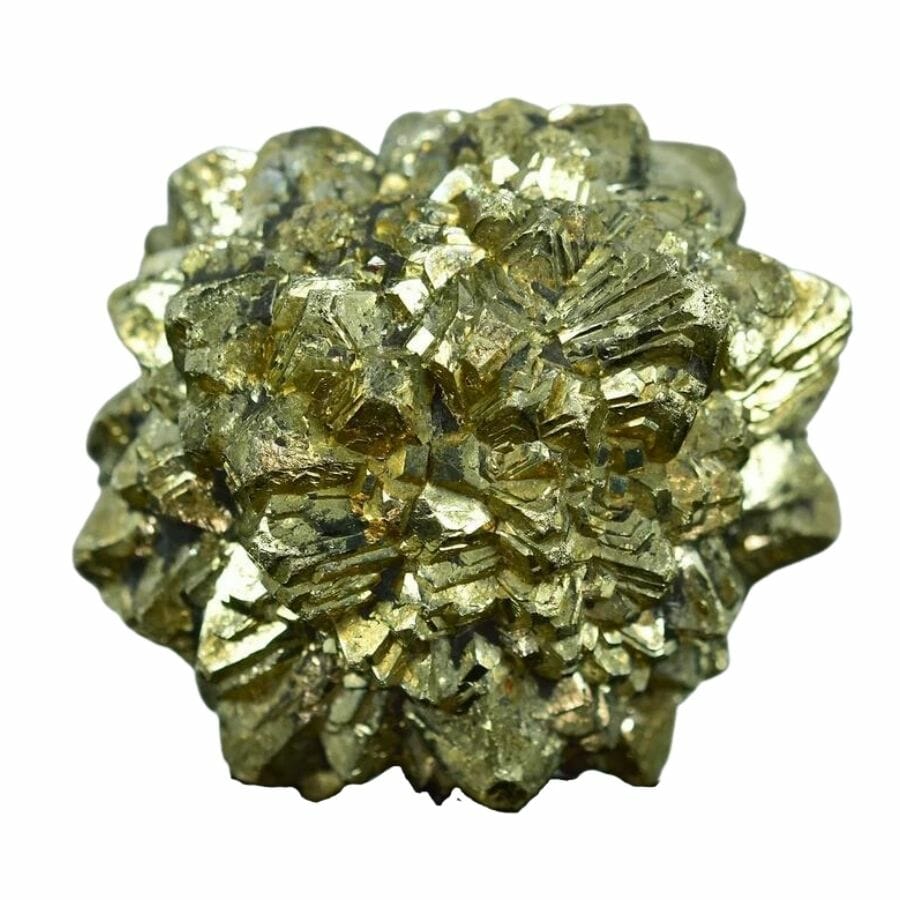
Let’s talk about a real gem: marcasite! If you’ve ever seen shiny, metallic crystals that look like they’re straight out of a fairy tale treasure chest, then you’ve probably seen marcasite.
It has a golden or silver sheen that can sparkle brilliantly, almost like it’s winking at you from the ground!
Now, marcasite isn’t the same as fool’s gold, but it does share a family resemblance. It’s shiny and has a gold-ish, silver-ish look that glimmers in the light.
It forms when iron and sulfur hang out together under the right conditions, deep down in the Earth’s crust. Over time, they bond and create those gleaming marcasite crystals.
Marcasite is quite a big deal because of its sparkle. Many people love to use it in jewelry because it gives that beautiful shimmer without the big price tag of some other gems.
But marcasite isn’t just a pretty face. Scientists and rock lovers also study it to learn about how minerals form and what conditions were like underground in ancient times.
Where you can find marcasite in Tennessee
- Tri-Cities Airport quarry, Sullivan County
- Elmwood Mine, Carthage
- Eve Mills Prospect, Monroe County
Our Favorite Places For Gem Mining in Tennessee
We’ve created a list of our favorite locations so that adults and children can use it to experience the thrill of gem mining. These places will allow adults to participate in real gem mining and help kids get off to the most incredible start on their gem hunting quests.
Always Confirm Access and Collection Rules!
Before heading out to any of the locations on our list you need to confirm access requirements and collection rules for both public and private locations directly with the location. We haven’t personally verified every location and the access requirements and collection rules often change without notice.
Many of the locations we mention will not allow collecting but are still great places for those who love to find beautiful rocks and minerals in the wild without keeping them. We also can’t guarantee you will find anything in these locations since they are constantly changing.
Always get updated information directly from the source ahead of time to ensure responsible rockhounding. If you want even more current options it’s always a good idea to contact local rock and mineral clubs and groups
Cumberland Mountain State Park
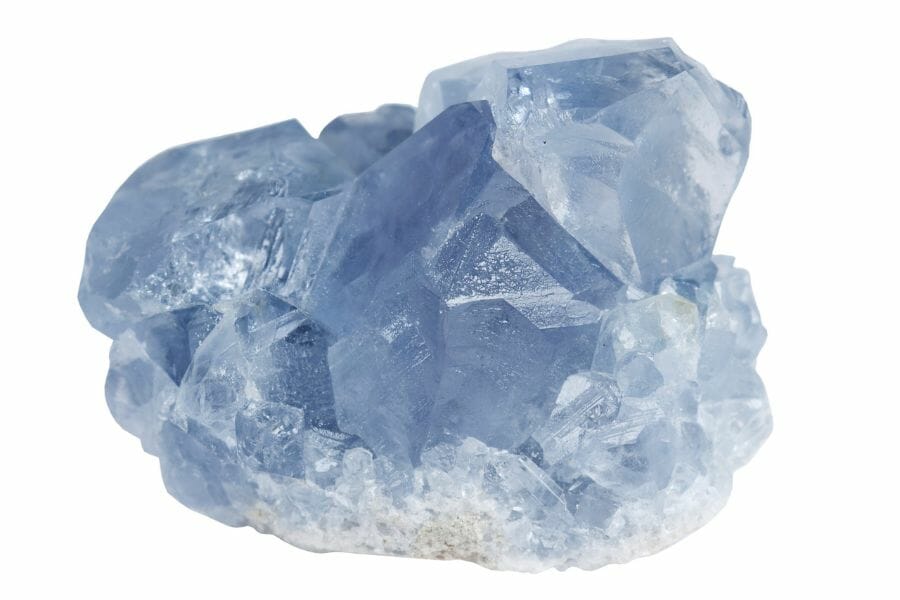
24 Office Dr, Crossville, TN 38555, United States
Cumberland Mountain State Park is located in Crossville, on the Cumberland Plateau. The park covers 1,720 acres and is surrounded by the Cumberland Forest. There are a ton of outdoor activities, such as gem mining, where you can search for precious stones and minerals in the park’s mining sluices. It’s popular among families and is a fun way to learn about geology and the local environment.
The Types Of Gemstones Found At Cumberland Mountain State Park
- Barite
- Calcite
- Celestite
- Fluorite
- Gypsum
- Pyrite
- Quartz
- Sphalerite
The Best Time To Visit Cumberland Mountain State Park
The best time to visit Cumberland Mountain State Park for searching gemstones is in the summer months of May to August. The park offers gem mining activities during this time of year, and the weather is usually warm and sunny.
If you want REAL results finding incredible rocks and minerals you need one of these 👇👇👇
Finding the coolest rocks in isn’t luck, it's knowing what to look for. Thousands of your fellow rock hunters are already carrying Rock Chasing field guides. Maybe it's time you joined the community.
Lightweight, mud-proof, and packed with clear photos, it’s become the go-to tool for anyone interested discovering what’s hidden under our red dirt and what they've already found.
Join them, and make your next rockhounding trip actually pay off.
What makes it different:
- 📍 Find and identify 140 incredible crystals, rocks, gemstones, minerals, and geodes across the USA
- 🚙 Field-tested across America's rivers, ranchlands, mountains, and roadcuts
- 📘 Heavy duty laminated pages resist dust, sweat, and water
- 🧠 Zero fluff — just clear visuals and straight-to-the-point info
- ⭐ Rated 4.8★ by real collectors who actually use it in the field
Elmwood Mine
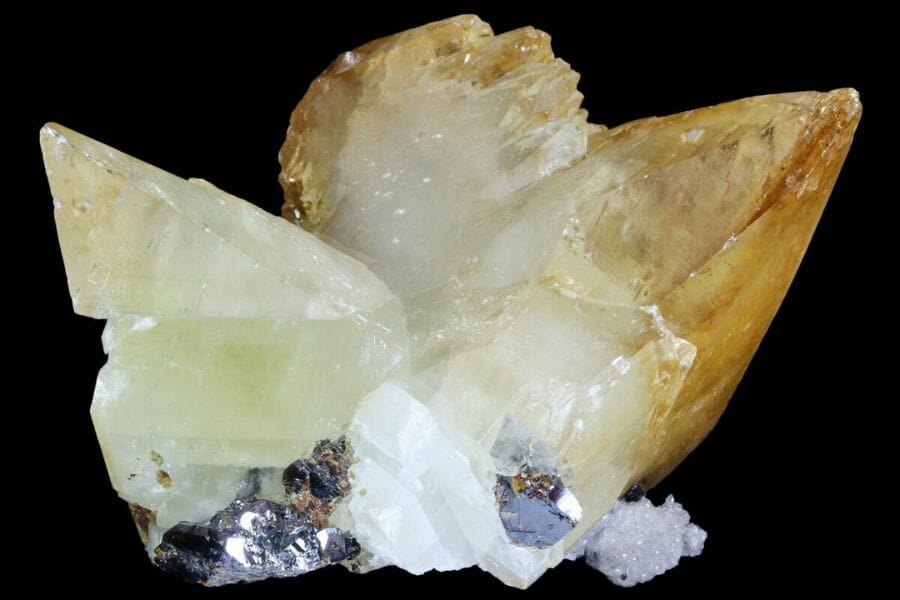
Carthage, Smith County, TN, United States
Elmwood Mine is an underground zinc mine located in Carthage. It was initially opened in 1969 and was later shut down for a considerable period until it reopened in 2010. You can explore the underground workings of the mine and learn about its history by taking a guided tour or by visiting one of the many interpretive exhibits located around the property. You can also find amazing Tennessee crystals here.
The Types Of Gemstones Found At Elmwood Mine
Over the years, the mine has generated numerous gemstones, some of which were:
- Aragonite
- Barite
- Calcite
- Fluorite
- Sphalerite
The Best Times To Visit Elmwood Mine
The spring months are the perfect times to explore the mine. Fewer gem miners go during this time of year, so you won’t have to worry about large crowds or long lines.
Douglas Lake
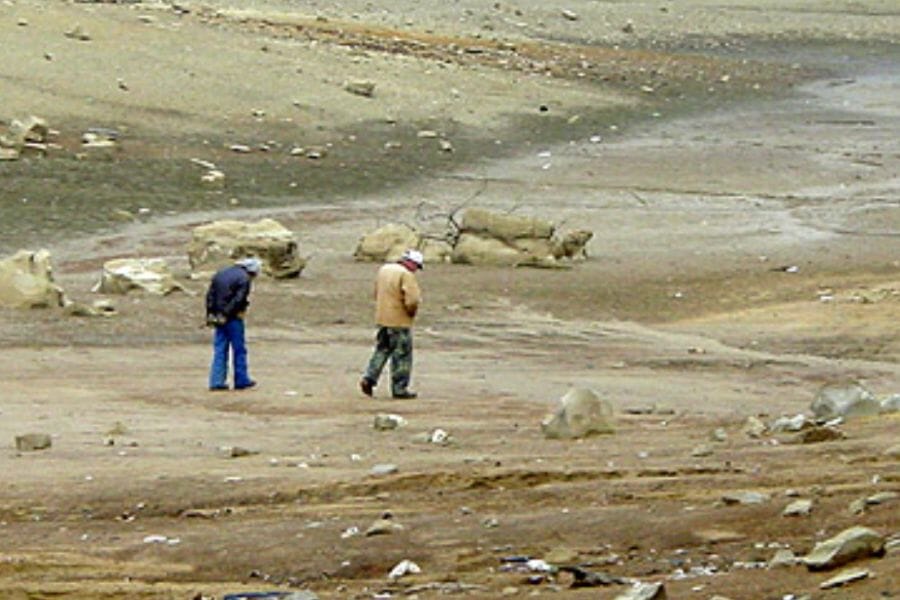
Douglas Lake, TN, United States
Douglas Lake is a great location that allows you to comb through the sandy banks of the lake in search of gems and minerals. You can purchase additional tools, such as sieves and magnifying glasses, to help them find their hidden treasures. This fun experience is excellent for all ages, so come prepared with sunscreen, bug spray, and plenty of water.
The Types Of Gemstones Found At Douglas Lake
Gem hunters can find various gemstones here, including:
- Calcite
- Hematite
- Quartz
The Best Time To Visit Douglas Lake
The best time to visit Douglas Lake to search for gems is in the summer, providing extended daylight so you can spend more time hunting for gems.
Cooper’s Gem Mine – Great for kids

1138 Big Hollow Rd, Blountville, TN 37617, United States
Cooper’s Gem Mine is located in the heart of the Smoky Mountains. You can experience the thrill of prospecting for gemstones and minerals and purchase jewelry made from the gems they find. The mine also offers educational programs to teach people about geology and how to pan for gems.
The Types Of Gemstones Found At Cooper’s Gem Mine
Cooper’s Gem Mine has a variety of gems, crystals, and other minerals available you can dig for, including:
- Agate
- Amazonite
- Amethyst
- Apatite
- Aquamarine
- Aragonite
- Aventurine
- Calcite
- Chrysocolla
- Citrine
- Fluorite
- Garnet
- Hematite
- Jasper
- Kyanite
- Malachite
- Moonstone
- Pyrite
- Quartz
- Tourmaline
The Best Time To Visit Cooper’s Gem Mine
Cooper’s Gem Mine is open year-round, and the weather is usually mild throughout the year. The mine is open for gem hunters from 9 am to 5 pm each day, and it’s best to plan your visit for a more enjoyable experience.
Pigeon Forge Gem Mine – Great for kids

2865 Parkway, Pigeon Forge, TN 37863, United States
Pigeon Forge Gem Mine is a family-owned gemstone mining attraction in Pigeon Forge. It’s been operating since 1998 and offers a unique experience for all ages. You can purchase buckets of ore that contain semi-precious stones, then use sluice boxes to search for their gems.
The staff at Pigeon Forge Gem Mine are knowledgeable about geology and can answer questions about the different stones that gem hunters find.
The Types Of Gemstones Found At Pigeon Forge Gem Mine
Although there are many various types of gems in this area, it is mainly recognized for having a lot of the following:
- Aquamarine
- Amethyst
- Citrine
- Kyanite
- Ruby
- Sapphire
- Smoky Quartz
- Topaz
The Best Time To Visit Pigeon Forge Gem Mine
The mine is open year-round, but hours may be limited in the winter months due to weather conditions. Planning before spending the day with family or friends would be best.
Other Great Options For Real Gem Mining in Tennessee
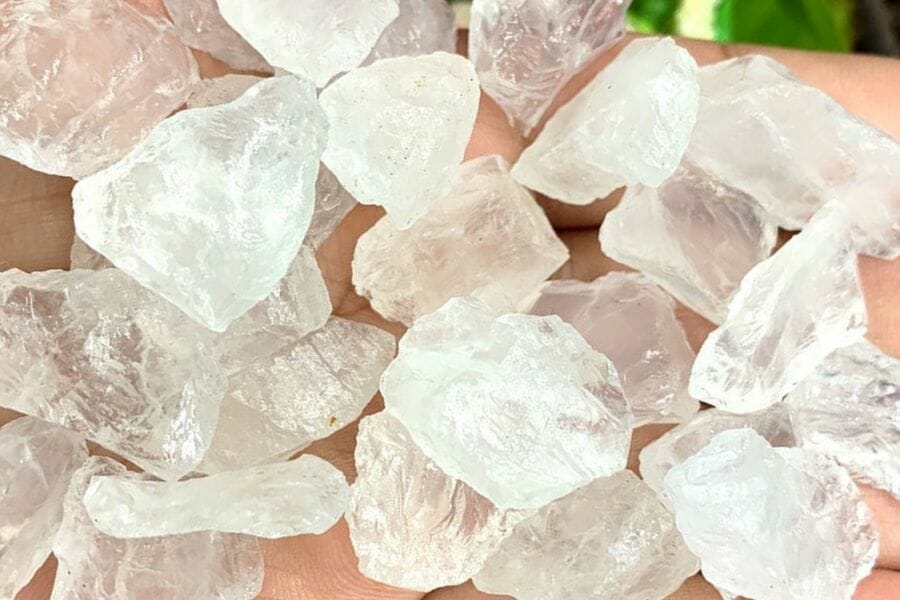
There are many gemstones in Tennessee, not just in the locations we’ve already highlighted. Along with our top picks from the list above, here are a few more fantastic locations you should check out if you want to go gem hunting in this state.
- Ben Lomond Mountain – Calcite, Celestite, Dolomite, Marcasite, Pyrite
- Boatland – Calcite, Celestite, Dolomite, Marcasite, Pyrite
- Buffalo Cove – Calcite, Celestite, Dolomite, Pyrite, Sphalerite
- Bumpus Cove Mining District – Anglesite, Cerussite, Hematite, Sphalerite
- Burra Burra Mine District – Actinolite, Garnet, Pyrrhotite, Quartz
- Horse Mountain – Agate
- Little Tennessee River – Clear Quartz
- Mossy Creek – Smithsonite, Sphalerite
- Straight Creek Mines – Sphalerite
- Tennessee River – Freshwater Pearls
- Unaka Mountains – Epidote, Quartz, Unakite
The Top Public Gem Mining Locations in Tennessee

Here are some more excellent suggestions for parents who want to introduce their kids to gem mining.
- Jae’s Gem Mine – 2416 Music Valley Dr. Suite 102, Nashville, TN 37214, United States
- Little River Gem Mine – 2189 Winfield Dunn Pkwy, Sevierville, TN 37876, United States
- Lucky ‘7’ Mine – Craftsman, S Valley, Pigeon Forge, TN 37863, United States
- Magic Gem Mine – 2135 Wears Valley Rd, Sevierville, TN 37862, United States
- Old Smoky Gem Mine – 968 Parkway, Gatlinburg, TN 37738, United States
Tennessee Gem Mining Laws And Regulations
Tennessee has a few regulations that apply to recreational gem hunting. These regulations are designed to protect the environment and ensure public safety. Prospectors must obtain a permit from the Tennessee Department of Environment and Conservation before engaging in any gemstone prospecting or collecting.
Gem hunters may only collect gems on state-owned lands with permission from the appropriate land manager. They must adhere to all applicable state laws and regulations, including land use and access, water quality, wildlife protection, and air quality. Prospectors must not disturb any archaeological sites or artifacts while gem hunting.
All collected gems must be kept in their natural form; they may not be altered or processed before being removed from the site. All collected gems must be labeled with the collector’s name and date of collection; this information should also be recorded in an inventory log.
For more information on Tennessee’s gem mining laws and regulations, visit the Tennessee Department of Environment and Conservation website link above.
Additional places to mine for gems in nearby states
You can browse the list of guides we’ve created below to locate more gems in the neighboring states when you’re done visiting each of the sites we mentioned above:
- Gem mining in Alabama
- Gem mining in Arkansas
- Gem mining in Georgia
- Gem mining in Kentucky
- Gem mining in Mississippi
- Gem mining in Missouri
- Gem mining in North Carolina
- Gem mining in Virginia
If you have any recommendations we haven’t covered, please leave them in the comments below!

